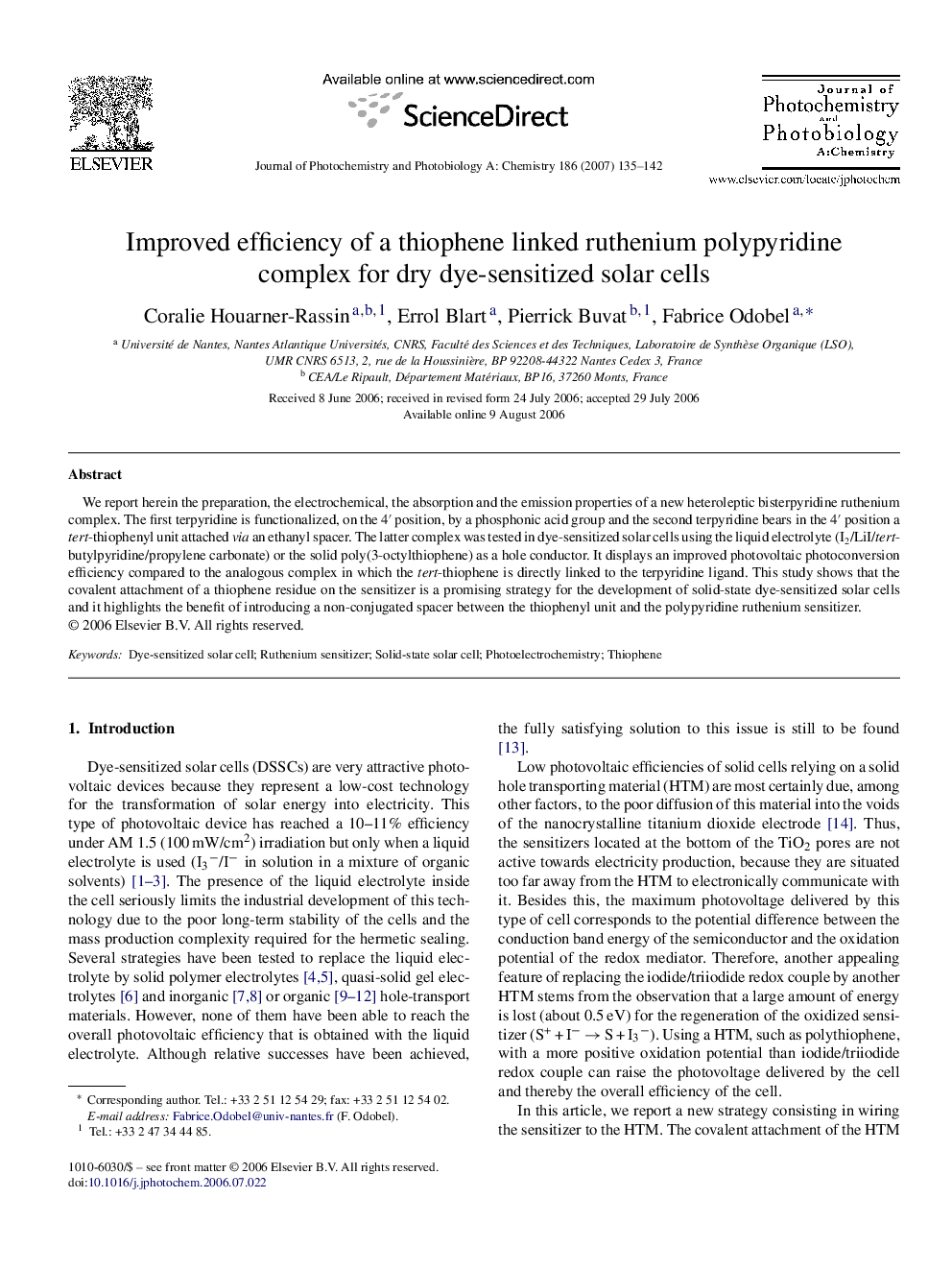| Article ID | Journal | Published Year | Pages | File Type |
|---|---|---|---|---|
| 28341 | Journal of Photochemistry and Photobiology A: Chemistry | 2007 | 8 Pages |
We report herein the preparation, the electrochemical, the absorption and the emission properties of a new heteroleptic bisterpyridine ruthenium complex. The first terpyridine is functionalized, on the 4′ position, by a phosphonic acid group and the second terpyridine bears in the 4′ position a tert-thiophenyl unit attached via an ethanyl spacer. The latter complex was tested in dye-sensitized solar cells using the liquid electrolyte (I2/LiI/tert-butylpyridine/propylene carbonate) or the solid poly(3-octylthiophene) as a hole conductor. It displays an improved photovoltaic photoconversion efficiency compared to the analogous complex in which the tert-thiophene is directly linked to the terpyridine ligand. This study shows that the covalent attachment of a thiophene residue on the sensitizer is a promising strategy for the development of solid-state dye-sensitized solar cells and it highlights the benefit of introducing a non-conjugated spacer between the thiophenyl unit and the polypyridine ruthenium sensitizer.
